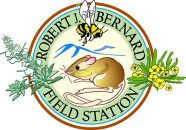Christensen, Jesse H. (2002)
Development of Anthropogenic and Agricultural Soil Systems: A case study of the Pomona College Farm & its surrounding environment.
Bachelor of Arts, Pomona College, Geology.
Advisor: Sian Davies-Vollum.
The Pomona College Farm in the southern Wash area of the Pomona College campus, Claremont, CA, was initiated four years ago to provide a necessary example of the potential of regenerative use of soil systems that can establish sustainable livelihoods in the place of abusive ones. Since, on-site vegetation has burgeoned from groundcover plants to a complex system of intradependent annual & perennial growth. As a result of the incredible development of the Pomona College Organic Farm in such a short period of time, the site has been added to the campus master plan as scheduled for agricultural use for the next 20 years. As such, its condition ought to be maximized to provide this use most effectively, while enhancing the potential ability of its methods by namely permaculture design & management. There is no prior formal analytical study of the soil of the farm & its environment. This study aims to characterize farm soils, identify Wash soils, & establish a foundational body of knowledge useful for sustainable growth planning & modeling. As the area in previous history has been an engineered oak grove most recently host to a temporary waste dump site, & current bioremediation using non-intrusive vegetation tactics, defines the site as having been subject to a range of anthropogenic effect. Historically & currently, the area of the site has undergone minimal tillage, & thus offers an ideal environment in which to study the potential regenerative effects of innovative non-intrusive methods of land use. In order to design & enable better understanding & practice of its continued regeneration & usage, the basic integrated physical, biological, chemical, & geological properties of on-site soil have been analyzed & compared to environmentally occurring components of the off-site soil of the surrounding area for the probable anthropogenic effects historically, currently, & most effectively, for the future. Components of geologic history, anthropogenic history, landform, structure, texture, mottling, water supply, soil humidity, organic content, pH, mineral nutrient content of Nitrogen, Phosphorus, Potassium, particle size distribution, clay content, silt/clay mineralogy, & invertebrate ecology, are considered. Interpretation of their integrated interrelationship is based on a fundamental whole systems approach. Probable zonation of soil profile is discussed for the potential classified designation for the area, & its future.
